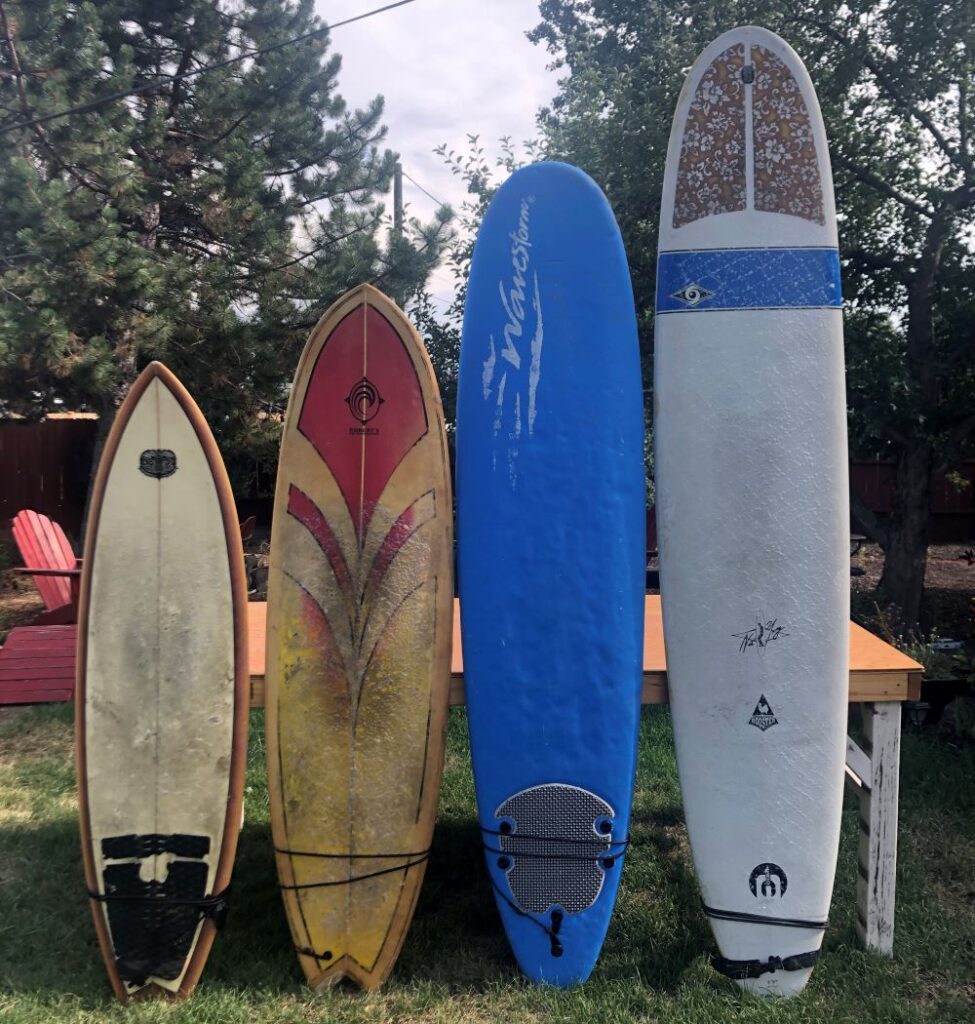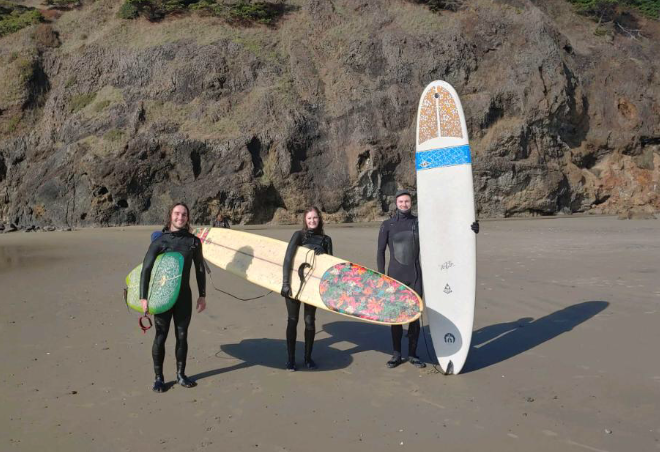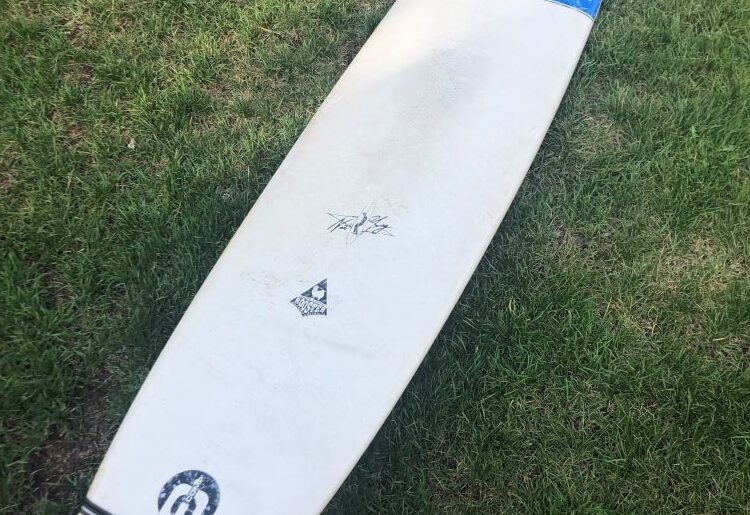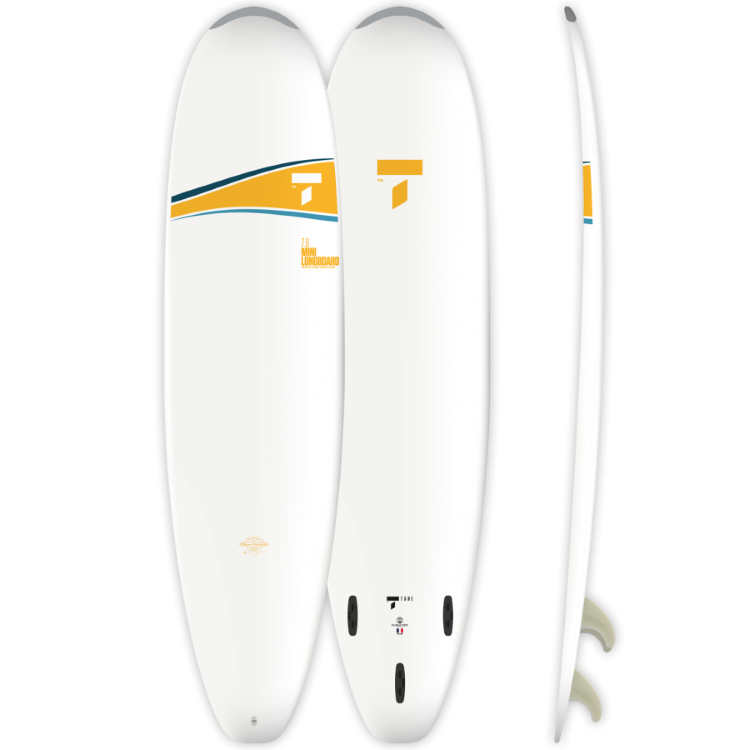In the surfing world, hard-top surfboards are the next step up from a soft-top. In this article, we’ll cover the best hard-top surfboards for beginners (specifically longboards) to help you progress your surfing.
After you learn the basics of surfing using a soft-top, a hard-top is the natural next level in surfing progression. Hard-tops are more responsive and maneuverable, allowing you to practice turns and other fun tricks!
Is a hard-top surfboard right for you?
Hard-tops and soft-tops (aka foamies) are quite different, and each serve a unique purpose.
| Hard-tops | Soft-tops | |
| Pros | Better performance (maneuverability) | Super durable Lower risk of injury from collision Usually more affordable No wax needed |
| Cons | May not be as durable Higher risk of injury from collision Usually more expensive | Worse performance (maneuverability) |
| Conclusion | Best for beginners who have the basics down and want to progress to the next level | Best for true beginner surfers who are learning the basics. Good for kids or older people who may have more trouble managing a board |
Soft-top surfboards are best for true beginners because they are forgiving and easier to manage. When learning how to surf, it can be difficult to control your board in powerful ocean waves and collisions with surfboards are common. For this reason, foam surfboards are safer for both you and other surfers.
In contrast, hard-top surfboards are more responsive and better for maneuvers. Hard-tops are harder to manage and more dangerous in the water (you don’t want to collide with a hard-top surfboard).
As a result, beginner surfers should first learn the basics of surfing on a soft-top, then progress to a hard-top surfboard. Learn more about when you are ready to upgrade from a soft-top to a hard-top.
What size hard-top surfboard is best for you?
One of the biggest challenges beginner surfers make is choosing a surfboard that is too small. Beginner surfers should start on a surfboard that is large (long, wide, and high-volume) because larger surfboards are more stable.
It is important to learn how to surf using a surfboard that is the right size for you. Choose a surfboard that has an appropriate length and volume for your skill level.
| True Beginners (Surfed < 5 times) | Beginners (Surfed > 5 times) | |||
| Weight (lbs) | Length (ft, in) | Volume (liters) | Length (ft, in) | Volume (liters) |
| <120 | 7’2” | 72 | 6’8” | 54 |
| 120 | 7’4” | 74 | 7’0” | 57 |
| 130 | 7’6” | 76 | 7’2” | 60 |
| 140 | 7’8” | 78 | 7’4” | 63 |
| 150 | 8’ | 80 | 7’6” | 66 |
| 160 | 8’4” | 83 | 7’8” | 70 |
| 170 | 8′8 | 86 | 8’ | 74 |
| 180 | 9’ | 89 | 8’4” | 78 |
| 200 | 9’4″ | 92 | 8′8 | 82 |
| 220 | 9’8″ | 95 | 9’ | 86 |
| 230 | 10’ | 98 | 9’4″ | 90 |
| 250 | 10′ | 102 | 9’8″ | 94 |
| > 250 | 10′ | 105 | 10′ | 98 |
Beginners transitioning from a soft-top to a hard-top will probably want to choose a hard-top of similar size. You shouldn’t downsize too quickly when learning how to surf. You might perhaps choose something slightly smaller, but still in the longboard domain.
Best overall hard-top surfboard – 10’ Degree 33 Surfboard
The Degree 33 10 foot longboard is a great overall choice for beginners. It is a solid all-around surfboard that you can learn on and progress your surfing skills. As an epoxy surfboard, it is more durable, lighter, and more buoyant than traditional PU construction, which is great for beginners.
It has sufficient volume (89 liters) for beginners and heavier surfers, but the shape is also conducive to more advanced surfers. Regardless of your skill level, you will have a great time on this board.
Degree 33 is a reputable company that makes different sized longboards, as well as other styles of surfboards.
Best budget hard-top surfboard – Paragon Retro Nose Rider
The Paragon Retro Nose Rider is an overall great value for a hard-top surfboard. For an affordable price, you get a quality surfboard that is suitable for beginners and intermediate/advanced surfers.
This is a board you can learn on and progress with, without breaking your bank account. The Paragon Retro Nose Rider is an epoxy surfboard of newer technology.
Overall, this is a great budget option, as it is one of the more affordable hard-top longboards on the market. Paragon also makes a number of other longboards that are also good options for beginners.
Best hard-top surfboard for kids –7’6” TAHE Mini Longboard
The TAHE Mini Longboard is perfect for kids or lighter adults looking to upgrade to a hard-top surfboard. It is a bit smaller at 7 foot 6 inches but carries a lot of volume for its length (62 liters). It is quite stable and buoyant making it great for beginner surfers.
The epoxy construction is durable and lightweight, which makes transportation easier. You also don’t really need a board bag, as dings are not so much of a worry compared to PU surfboards.
TAHE is a reputable watersports company that makes a variety of surfboards. I personally own two of their hard-top surfboards and love them!
When should you transition from a soft-top to a hard-top?
As a beginner, you might be hesitant to commit to a hard-top surfboard. After all, it is a big step. Soft-top surfboards are forgiving, buoyant, and overall a great time. So, is it really worth switching from a foam surfboard to a hard-top? What is the right skill level needed to use a hard top surfboard?

The answer is, it depends both on your abilities and your surfing goals! Hard-tops require a bit more skill to manage and have a higher risk of injury during collisions. However, hard-top surfboards are much more responsive than soft-tops and allow for more complex (and fun) maneuvers. I have a whole article about transitioning from soft-top to hard-top surfboards.
What is the difference between PU and epoxy surfboards?
PU surfboards (aka fiberglass surfboards) are more traditional construction. They are heavier, generally more affordable, and more fragile. Epoxy surfboards are usually more durable, lighter, and more expensive. Learn more about the different types of surfboard materials.

Both are better in different ways. As a beginner surfer, it really won’t matter too much to you. As you improve, you may prefer one or the other. I recommend renting both types to get a feel for the difference or borrowing from a friend.
How long does a hard-top surfboard last?
A PU (poly) surfboard will typically last 5 to 10 years, whereas an epoxy surfboard will last 10 to 15 years. However, it really depends on how much you use the board and how well you take care of it. Learn more about how long surfboards last and how to take care of your surfboard.
Where can you buy a hard-top surfboard?
You can buy a hard-top surfboard online or in person at a surf-shop. Both are okay options. Buying online may lead to damage during shipping. If this happens, the seller will usually make it right. However, shipping can cost extra, but it can still be worth it to buy online from the manufacturer directly, rather than pay retail prices. Learn more about buying a surfboard online vs in store.
Conclusion
To wrap things up, there are several good hard-top surfboards for beginners out there. The hard-top surfboards for beginners listed in this article are the best in my opinion. If you want to learn more about longboards, check out my guide to longboard surfboards.
Choose one and hit the waves! Or go into your local surf shop and get more guidance. Either way, if you are in the market for a hard-top surfboard, chances are you are progressing your abilities. That’s awesome! Have fun out there.
Heads up! Surfing is awesome but it can be dangerous! Learn more about how to stay safe and avoid dangers while surfing. If you are a beginner surfer, check out my other articles about surfing and my ultimate guide to learning how to surf.




![Best longboard surfboards [2023] – all skill levels surfer with surf hat](https://mindfulladventure.com/wp-content/uploads/2022/10/surf-hat-crop-1000-270x180.jpeg)




